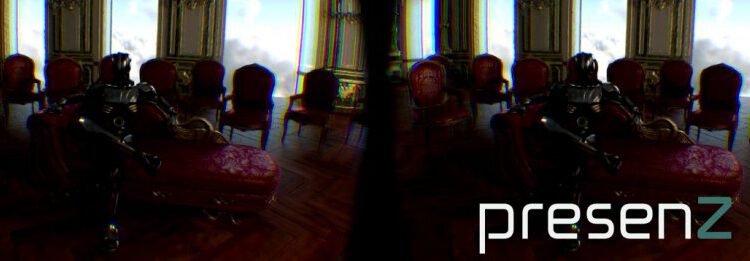The Nozon company presents a new technology called PresenZ that allows you to create computer-generated movies (CG) that, in addition to allowing us to see them in 3D and 360º, add the almost essential possibility of following the movements of our head to see objects from different angles or get closer to them.
Until now we could only have absolute positioning in games or demos on which the image is generated in real time, and therefore each frame is calculated by the time we move the head, while in the videos in 360 ° pre-recorded, we had to make do with look around you, without which the picture would change if we desplazábamos to a minimum, with that you lost a good part of the dive, and even being the movie in 3D was very difficult to get to feel some minimally-like presence. At least much more complicated than in a game or demo.
But this is already going to change thanks to Nozon’s PresenZ technology. This technique allows us to generate high-quality pre-rendered content that can later be adapted to each movement of our head, achieving a parallax effect on the objects that make up the image that greatly increases the feeling of 3D, in addition to allowing us to see things from different angles by simply moving the head, and even getting closer to look at something closer to see it in detail. It is the icing that was missing on the cake of the 360º video for virtual reality to be able to really feel inside the movie.
The advantages with respect to the content generated in real time are obvious, and the most important is that being all pre-rendered images, the computing power necessary to be able to watch a movie with a very high quality image is much less than that necessary for the contents generated in real time of an equivalent quality. This will not only be good for watching movies, it is also of great interest to create cinematic scenes within much more realistic and immersive video games. Another great advantage is that it helps a lot to reduce the feeling of dizziness, which increases a lot if the image does not respond to all the movements of our head and not just to rotations.
Each frame requires several hours to render with this technique, and now play them is not as straightforward as a normal video to 360°, since the necessary bandwidth is around 2.5 GB/s and the moment it is only possible to get it played directly from the ram, but they are working on compression techniques that will reduce this bandwidth to about 300 Mb/s that is manageable for a good SSD hard disk. It will therefore be necessary at least a gamer PC equipped with a GTX780ti style card, a good SSD hard drive and an i7 processor, but once we have the necessary equipment it can be said that there is no limit to the graphic quality that can be obtained. The only limit, of course, will be the screen capacity of our HMD.
The technique also has its limits. The absolute positioning it allows covers only one area, from which it would no longer detect our movements. This area, known as the Vision Zone, reaches up to where we could normally move our head while sitting. This means that if we get up and pretend to go a little further, the effect will be lost, but to watch a movie in principle we do not need more. Also by now the movie plays just 25 fps and the refresh of the DK2 is limited to 60 Hz (we understand that the changes of the image caused by the movements of our head will be played at 60 fps, regardless of the 25 that advances the film), but this is just beginning and little by little we assume that will be solved each limitation to ensure that everything goes as it should.
Another current limitation is that they can only generate 1 minute of content, which they also hope to overcome soon, and that the fog and semi-transparent smoke effects do not work very well with this technique, not so the dense smoke that does seem to work without problems. For now the technique can only be applied to computer-generated films, not to films with real actors, but it is a first step and although adapting this to filming with real cameras seems to be much more complicated, we would not rule out seeing it also in the medium term.







